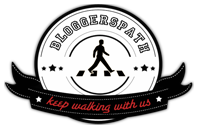Smartphones have changed the way people interview for jobs. Communication platforms such as Skype and Google Hangouts have allowed people to more easily connect with others face-to-face without having to be near one another. But video interviewing adds a new dimension to interviewing with a potential employer. Getting the right lighting, preventing the phone from shaking, and being aware of how you look are all important aspects of interviewing. Find out how you can use your smartphone for a video interview.
Place the Phone on a Stable Surface and Use Good Lighting
Chances are good that you won’t be using a setup like the one pictured above. But you should visualize the interview as taking place in a studio setting: Dress up, make sure the lighting is adequate, and put the phone at the right angle so that it’s not in danger of moving. Use books or any heavy object to prop the phone up at an angle and use another object at the phone base to keep it from sliding forward.
You want to get the phone as stable as possible and prevent it from moving during the interview. While people are usually forgiving of an “oops” moment, why have one in the first place? Keep distractions from happening so that you can focus on the conversation and not your phone.
Always make sure that the light is coming from in front of you and not behind you. People can’t see your face if the light comes from behind. Set up the phone, turn on your camera, and work out the spot to place the light source so that you get the best amount of illumination.
Consider Using a Smartphone Tripod
If you find that you don’t have a good spot to set up your camera in your home, consider a tripod made for smartphones. Setting up a smartphone tripod is easy, plus it’s small enough that you don’t need a lot of space.
Use a countertop, shelf, or part of your desk to set up the tripod and conduct your interview. You can also set up your space, see how the arrangement looks on the phone, and not worry about replicating the perfect arrangement when the interview happens. Plus, the tripod stabilizes the camera and frees up your hands so that you can take notes as the interview progresses.
Invest in a Phone With a Good Camera and Sound
You could use a headset with a microphone to make sure you don’t miss anything during the interview, but what if you lose it? What if you feel that the headset doesn’t look professional on camera?
Your best option in this situation is to invest in a solid phone such as the Samsung Galaxy S7 with a high-quality camera and microphone. Pair the Samsung Galaxy S7 with T-Mobile’s high-speed network, for example, and you can be confident that you’re transmitting a strong signal that won’t break up the video and sound on the other end. T-Mobile has invested heavily in its tower network to give users reliable connections that won’t drop calls at the worst possible moments.
Practice Making Calls Before the Real Interview
Find a friend or family member to work with before you do the interview itself. Take the opportunity to work out any bugs in your setup, find out if the lighting isn’t working, and get feedback on how you look. Work on a list of common interview questions along with ones you think may get asked during the interview and have the person on the other end give you a mock interview with the questions. The more you practice, the more at ease you’ll find yourself when the real interview takes place.
Take the time to get everything right before you go live with an interviewer. You’ll face less stress when you have everything in its place before you take the call. With a bit of preparation on your part, you’ll come off as polished and prepared, qualities that get noticed by the interviewer.
Image via Flickr by Andy Atzert




